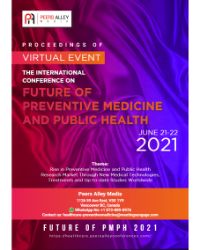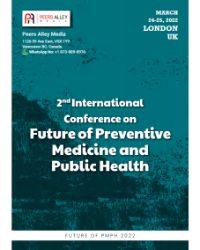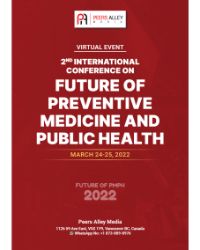Theme: Examining global macrotrends, treatments and discovering the latest technological tools--- To empower you and deliver healthcare, reinvented
----------------------------------------------------------------------------------
Preventive Medicine and Healthcare Proceedings
Dear Colleagues,
On behalf of the organizing committee, it is my pleasure to invite all of the reputed scientists, scholars, business professionals, industries, faculty, hospitals and students from all over the world to attend the 3rd International Conference on Future of Preventive Medicine and Public Health from March 30-31, 2023 Barcelona, Spain.
Because the challenges affect a growing number of experts and public healthcare professionals around the world, effective solutions in health and medicine must be cross-cutting. We hope that this event will generate a worldwide, cross-sector discourse that will shed light on – and drive meaningful answers to the substantial challenges that we confront in diagnosing and treating a variety of illnesses and diseases.
Healthcare future appears to be bright and promising. Technology has the potential to help us live healthier and longer lives. Environmental and technological factors, doctor demographics, the Internet of Things and wearable technologies, artificial intelligence, virtual reality/augmented reality, 3D printing, robots and nanotechnology all contribute in shaping the future healthcare systems.
Patient empowerment is a major focus of future healthcare. To be able to control technology, all the allied health professionals must become acquainted with the most recent developments. We are confident that each one of you will identify topics of your interest and benefit from many fruitful and enriching discussions, rising professional knowledge exchange, insights and collaborations.
This two-day conference is intended to provide and share the most recent information and developments, as well as to highlight numerous scientific discoveries and significant milestones in healthcare and medicine.
Thank you in advance for lending your voice to this important and timely discussion. We look forward to the contributions of our speakers and experts alike to developing novel solutions to these dynamic and unprecedented challenges.
Thanks & regards,
Organizing Committee
Future of PMPH 2023
Peers Alley Media
1126 59 Ave East, V5X 1Y9
Vancouver BC, Canada

The Christ Hospital Health Network Cincinnati, USA

Pardee Hospital Center, USA

University of Bonn, Germany

Into Performance ULC, Canada

Tags
Legitimate Scientific Conference Organizer
Pediatrics Conferences
Public Health Conferences
Digital Health Conferences
Pharma Drugs and Research Conferences
Biotechnology Conferences
Healthcare Conferences
Personalized and Precision Medicine
Peers Alley Media Scientists Opinion
Internal Medicine Conferences
Pharmaceutical Conferences
HIV/ AIDS Conferences
Nursing Conferences
Nutrition and Heath Conferences
Clinical Medicine Conferences
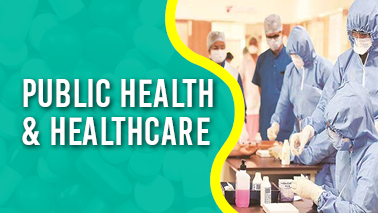
Tags
Cardiology Conferences
Healthcare Conferences
Pediatrics Conferences
HIV/ AIDS Conferences
Preventive Medicine Conferences
Peers Alley Media Scientists Opinion
Biotechnology Conferences
Public Health Conferences
Clinical Medicine Conferences
Pharma Drugs and Research Conferences
Family Medicine Conferences
Nano Medicine Conferences
Diabetes Research Conferences
Pharmaceutical Conferences
Nursing Conferences

Tags
Peers Alley Media Conferences Feedback
Primary Care Conferences
Peers Alley Conferences Reviews
Internal Medicine Conferences
Nano Medicine Conferences
Infectious Diseases Conferences
Genomics Conferences
Psychology and Psychiatrist Conferences
Peers Alley Media Scientists Opinion
Pharmaceutical Conferences
Legitimate Scientific Conferences of Peers Alley Media
Public Health Conferences
Diabetes Research Conferences
Nursing Conferences
Endocrinology Conferences
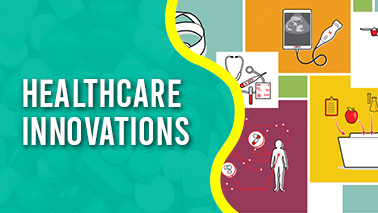
Tags
Psychology and Psychiatrist Conferences
Chronic Disease Conferences
Internal Medicine Conferences
Genomics Conferences
Preventive Medicine Conferences
Digital Health Conferences
Geriatrics Conferences
Occupational Health and Safety Conferences
Endocrinology Conferences
Healthcare Conferences
Legitimate Scientific Conferences of Peers Alley Media
Oncology Conferences
Pathology Conferences
Dentistry Conferences
Diabetes Research Conferences
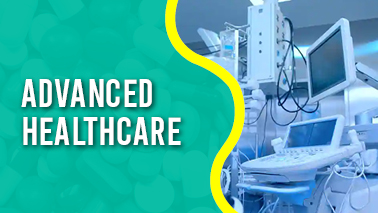
Tags
Pharma Drugs and Research Conferences
Peers Alley Media Scholars Opinion
Pharmaceutical Conferences
Preventive Medicine Conferences
Nano Medicine Conferences
Peers Alley Media Conferences Feedback
Digital Health Conferences
Diabetes Research Conferences
Public Health Conferences
Occupational Health and Safety Conferences
Endocrinology Conferences
Nursing Conferences
Peers Alley Conferences Reviews
Virology Conferences
Legitimate Scientific Conference Organizer

Tags
Healthcare Conferences
Infectious Diseases Conferences
Virology Conferences
Diabetes Research Conferences
Nutrition and Heath Conferences
Legitimate Scientific Conferences
Peers Alley Media Scientists Opinion
Peers Alley Conferences Reviews
Clinical Medicine Conferences
Geriatrics Conferences
Peers Alley Media Scholars Opinion
Biotechnology Conferences
Preventive Medicine Conferences
Public Health Conferences
Endocrinology Conferences
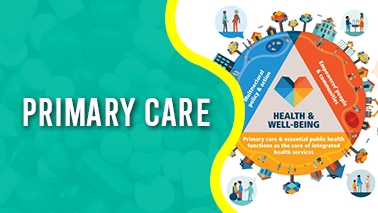
Tags
Pathology Conferences
Infectious Diseases Conferences
Primary Care Conferences
Family Medicine Conferences
Clinical Medicine Conferences
Legitimate Scientific Conferences of Peers Alley Media
Nursing Conferences
Pharma Drugs and Research Conferences
Peers Alley Media Scientists Opinion
Digital Health Conferences
Preventive Medicine Conferences
Legitimate Scientific Conference Organizer
Pharmaceutical Conferences
Diabetes Research Conferences
Pediatrics Conferences
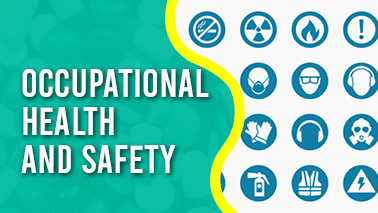
Tags
Preventive Medicine Conferences
Dentistry Conferences
Nutrition and Heath Conferences
Personalized and Precision Medicine
Digital Health Conferences
Nursing Conferences
Clinical Medicine Conferences
Peers Alley Media Scientists Opinion
HIV/ AIDS Conferences
Pathology Conferences
Family Medicine Conferences
Internal Medicine Conferences
Public Health Conferences
Cardiology Conferences
Pharmaceutical Conferences

Tags
Peers Alley Media Scientists Opinion
Infectious Diseases Conferences
Public Health Conferences
Endocrinology Conferences
Biotechnology Conferences
Geriatrics Conferences
Nano Medicine Conferences
Chronic Disease Conferences
Psychology and Psychiatrist Conferences
Pathology Conferences
Clinical Medicine Conferences
Peers Alley Media Scholars Opinion
Personalized and Precision Medicine
Peers Alley Media Conferences Feedback
Nursing Conferences

Tags
HIV/ AIDS Conferences
Nursing Conferences
Family Medicine Conferences
Digital Health Conferences
Legitimate Scientific Conferences
Nutrition and Heath Conferences
Oncology Conferences
Internal Medicine Conferences
Occupational Health and Safety Conferences
Chronic Disease Conferences
Biotechnology Conferences
Diabetes Research Conferences
Genomics Conferences
Endocrinology Conferences
Public Health Conferences

Tags
Pharmaceutical Conferences
Preventive Medicine Conferences
Geriatrics Conferences
Pathology Conferences
Nano Medicine Conferences
Nursing Conferences
Legitimate Scientific Conference Organizer
Legitimate Scientific Conferences
Family Medicine Conferences
Biotechnology Conferences
Occupational Health and Safety Conferences
Dentistry Conferences
Healthcare Conferences
Virology Conferences
Cardiology Conferences

Tags
Peers Alley Conferences Reviews
Family Medicine Conferences
Digital Health Conferences
Virology Conferences
Healthcare Conferences
Nutrition and Heath Conferences
Public Health Conferences
Nursing Conferences
Legitimate Scientific Conference Organizer
Psychology and Psychiatrist Conferences
Internal Medicine Conferences
Cardiology Conferences
Occupational Health and Safety Conferences
Genomics Conferences
Chronic Disease Conferences
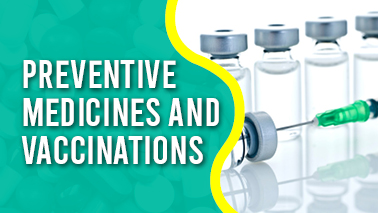
Tags
Chronic Disease Conferences
Legitimate Scientific Conferences of Peers Alley Media
Infectious Diseases Conferences
Public Health Conferences
Genomics Conferences
Peers Alley Conferences Reviews
Biotechnology Conferences
Nano Medicine Conferences
Endocrinology Conferences
Geriatrics Conferences
Psychology and Psychiatrist Conferences
Peers Alley Media Scholars Opinion
Internal Medicine Conferences
Preventive Medicine Conferences
Peers Alley Media Scientists Opinion

Tags
Pharmaceutical Conferences
Endocrinology Conferences
Primary Care Conferences
Internal Medicine Conferences
Peers Alley Media Conferences Feedback
Cardiology Conferences
Infectious Diseases Conferences
Legitimate Scientific Conference Organizer
Digital Health Conferences
Legitimate Scientific Conferences of Peers Alley Media
Virology Conferences
Clinical Medicine Conferences
Geriatrics Conferences
Public Health Conferences
Genomics Conferences

Tags
Nano Medicine Conferences
Oncology Conferences
Peers Alley Conferences Reviews
Primary Care Conferences
Occupational Health and Safety Conferences
Geriatrics Conferences
Clinical Medicine Conferences
Diabetes Research Conferences
Preventive Medicine Conferences
Nursing Conferences
Legitimate Scientific Conference Organizer
Nutrition and Heath Conferences
Digital Health Conferences
Biotechnology Conferences
Pharmaceutical Conferences

Tags
Psychology and Psychiatrist Conferences
Infectious Diseases Conferences
Biotechnology Conferences
HIV/ AIDS Conferences
Personalized and Precision Medicine
Primary Care Conferences
Genomics Conferences
Pharmaceutical Conferences
Family Medicine Conferences
Cardiology Conferences
Endocrinology Conferences
Clinical Medicine Conferences
Virology Conferences
Nutrition and Heath Conferences
Peers Alley Media Scholars Opinion
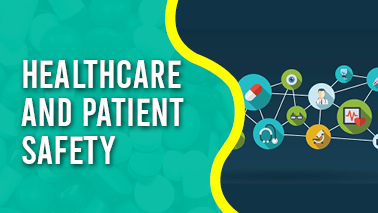
Tags
Peers Alley Media Scientists Opinion
Clinical Medicine Conferences
Public Health Conferences
Psychology and Psychiatrist Conferences
Genomics Conferences
Pediatrics Conferences
Virology Conferences
Occupational Health and Safety Conferences
Dentistry Conferences
Healthcare Conferences
Peers Alley Media Conferences Feedback
Legitimate Scientific Conferences
Personalized and Precision Medicine
Infectious Diseases Conferences
Nursing Conferences

Tags
Oncology Conferences
Occupational Health and Safety Conferences
Nano Medicine Conferences
Family Medicine Conferences
Peers Alley Conferences Reviews
Infectious Diseases Conferences
Pathology Conferences
Peers Alley Media Scientists Opinion
Dentistry Conferences
Clinical Medicine Conferences
Peers Alley Media Scholars Opinion
Peers Alley Media Conferences Feedback
Public Health Conferences
Personalized and Precision Medicine
Legitimate Scientific Conference Organizer
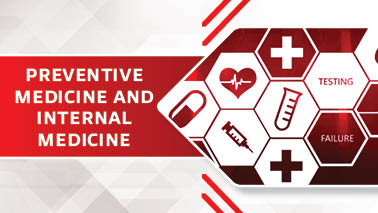
Tags
Pathology Conferences
Geriatrics Conferences
Internal Medicine Conferences
Healthcare Conferences
Peers Alley Media Conferences Feedback
Infectious Diseases Conferences
Legitimate Scientific Conferences
Dentistry Conferences
Oncology Conferences
Peers Alley Media Scholars Opinion
Virology Conferences
Occupational Health and Safety Conferences
Legitimate Scientific Conference Organizer
Peers Alley Conferences Reviews
Cardiology Conferences

Tags
Preventive Medicine Conferences
Cardiology Conferences
Internal Medicine Conferences
Pediatrics Conferences
Oncology Conferences
Virology Conferences
Dentistry Conferences
Peers Alley Media Scientists Opinion
Peers Alley Media Scientists Opinion
Legitimate Scientific Conference Organizer
Nano Medicine Conferences
Peers Alley Media Conferences Feedback
Primary Care Conferences
Pathology Conferences
Public Health Conferences

Tags
Primary Care Conferences
Internal Medicine Conferences
Legitimate Scientific Conferences
Occupational Health and Safety Conferences
Cardiology Conferences
Personalized and Precision Medicine
Pediatrics Conferences
Biotechnology Conferences
Genomics Conferences
Nutrition and Heath Conferences
Clinical Medicine Conferences
Nursing Conferences
Digital Health Conferences
Infectious Diseases Conferences
Peers Alley Conferences Reviews

Tags
Family Medicine Conferences
Endocrinology Conferences
Nano Medicine Conferences
Biotechnology Conferences
Chronic Disease Conferences
Pharma Drugs and Research Conferences
Public Health Conferences
Peers Alley Media Scientists Opinion
Nursing Conferences
Virology Conferences
Nutrition and Heath Conferences
Pediatrics Conferences
Personalized and Precision Medicine
Internal Medicine Conferences
Digital Health Conferences

Tags
Nutrition and Heath Conferences
Digital Health Conferences
Legitimate Scientific Conferences of Peers Alley Media
Primary Care Conferences
HIV/ AIDS Conferences
Nano Medicine Conferences
Personalized and Precision Medicine
Cardiology Conferences
Peers Alley Media Scholars Opinion
Legitimate Scientific Conference Organizer
Infectious Diseases Conferences
Peers Alley Media Scientists Opinion
Preventive Medicine Conferences
Chronic Disease Conferences
Pharma Drugs and Research Conferences

Tags
Nano Medicine Conferences
Virology Conferences
Endocrinology Conferences
Legitimate Scientific Conferences
Legitimate Scientific Conference Organizer
Healthcare Conferences
Pathology Conferences
Peers Alley Media Scientists Opinion
Geriatrics Conferences
Nursing Conferences
Peers Alley Conferences Reviews
Clinical Medicine Conferences
Biotechnology Conferences
Family Medicine Conferences
Peers Alley Media Conferences Feedback

Tags
Oncology Conferences
Cardiology Conferences
Peers Alley Media Scientists Opinion
Pharmaceutical Conferences
Legitimate Scientific Conferences
Peers Alley Media Scientists Opinion
Dentistry Conferences
Primary Care Conferences
Pathology Conferences
Genomics Conferences
Family Medicine Conferences
Clinical Medicine Conferences
Nano Medicine Conferences
Endocrinology Conferences
Peers Alley Conferences Reviews

Tags
Chronic Disease Conferences
Oncology Conferences
Peers Alley Media Scientists Opinion
Pathology Conferences
Peers Alley Media Conferences Feedback
Pediatrics Conferences
Legitimate Scientific Conference Organizer
Family Medicine Conferences
Legitimate Scientific Conferences
Peers Alley Media Scientists Opinion
Personalized and Precision Medicine
Primary Care Conferences
Biotechnology Conferences
Dentistry Conferences
Nutrition and Heath Conferences
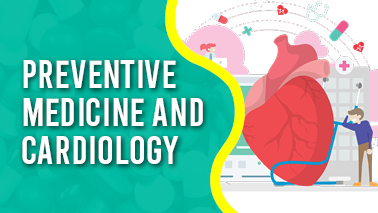
Tags
Legitimate Scientific Conferences
Peers Alley Media Conferences Feedback
Endocrinology Conferences
Nursing Conferences
Genomics Conferences
Family Medicine Conferences
Healthcare Conferences
Oncology Conferences
Pediatrics Conferences
HIV/ AIDS Conferences
Biotechnology Conferences
Personalized and Precision Medicine
Peers Alley Media Scientists Opinion
Peers Alley Media Scientists Opinion
Psychology and Psychiatrist Conferences
Tags
Preventive Medicine Conferences
Legitimate Scientific Conferences of Peers Alley Media
Nano Medicine Conferences
Healthcare Conferences
Legitimate Scientific Conferences
Diabetes Research Conferences
Public Health Conferences
Biotechnology Conferences
Pharmaceutical Conferences
Primary Care Conferences
Peers Alley Media Scientists Opinion
Chronic Disease Conferences
Personalized and Precision Medicine
Pathology Conferences
Legitimate Scientific Conference Organizer
Tags
Genomics Conferences
Nutrition and Heath Conferences
Peers Alley Media Scientists Opinion
Personalized and Precision Medicine
Pediatrics Conferences
Endocrinology Conferences
Oncology Conferences
Occupational Health and Safety Conferences
Preventive Medicine Conferences
Family Medicine Conferences
Digital Health Conferences
Clinical Medicine Conferences
Biotechnology Conferences
Healthcare Conferences
HIV/ AIDS Conferences

Tags
Peers Alley Media Scientists Opinion
Oncology Conferences
Genomics Conferences
Legitimate Scientific Conference Organizer
Pharmaceutical Conferences
Virology Conferences
HIV/ AIDS Conferences
Nutrition and Heath Conferences
Dentistry Conferences
Biotechnology Conferences
Legitimate Scientific Conferences
Primary Care Conferences
Occupational Health and Safety Conferences
Peers Alley Media Conferences Feedback
Digital Health Conferences

Tags
Virology Conferences
Family Medicine Conferences
Personalized and Precision Medicine
Endocrinology Conferences
Chronic Disease Conferences
Pharmaceutical Conferences
Legitimate Scientific Conference Organizer
Peers Alley Media Scientists Opinion
Internal Medicine Conferences
Digital Health Conferences
Peers Alley Media Conferences Feedback
Nano Medicine Conferences
Oncology Conferences
Geriatrics Conferences
Nursing Conferences

Tags
Pharmaceutical Conferences
Endocrinology Conferences
Nano Medicine Conferences
Cardiology Conferences
Peers Alley Media Scientists Opinion
Legitimate Scientific Conference Organizer
Nutrition and Heath Conferences
Primary Care Conferences
Geriatrics Conferences
Legitimate Scientific Conferences of Peers Alley Media
Dentistry Conferences
Pathology Conferences
Oncology Conferences
Public Health Conferences
Personalized and Precision Medicine

Tags
Occupational Health and Safety Conferences
Nursing Conferences
Peers Alley Media Scholars Opinion
Peers Alley Conferences Reviews
Preventive Medicine Conferences
Family Medicine Conferences
Clinical Medicine Conferences
Personalized and Precision Medicine
HIV/ AIDS Conferences
Public Health Conferences
Peers Alley Media Scientists Opinion
Nutrition and Heath Conferences
Pediatrics Conferences
Peers Alley Media Conferences Feedback
Biotechnology Conferences

Tags
Dentistry Conferences
Geriatrics Conferences
Pharma Drugs and Research Conferences
Personalized and Precision Medicine
Peers Alley Media Scientists Opinion
Clinical Medicine Conferences
Nursing Conferences
Internal Medicine Conferences
Healthcare Conferences
Diabetes Research Conferences
Nutrition and Heath Conferences
Peers Alley Media Scientists Opinion
Cardiology Conferences
Peers Alley Media Scholars Opinion
Pathology Conferences
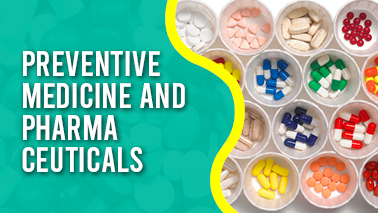
Tags
Diabetes Research Conferences
Preventive Medicine Conferences
Occupational Health and Safety Conferences
Pharmaceutical Conferences
Peers Alley Media Scientists Opinion
Internal Medicine Conferences
Pathology Conferences
Nursing Conferences
Family Medicine Conferences
Legitimate Scientific Conferences
Personalized and Precision Medicine
Endocrinology Conferences
Psychology and Psychiatrist Conferences
Peers Alley Conferences Reviews
Biotechnology Conferences

Tags
Nursing Conferences
Family Medicine Conferences
Pathology Conferences
Personalized and Precision Medicine
Clinical Medicine Conferences
Endocrinology Conferences
Preventive Medicine Conferences
Legitimate Scientific Conferences of Peers Alley Media
HIV/ AIDS Conferences
Infectious Diseases Conferences
Geriatrics Conferences
Diabetes Research Conferences
Cardiology Conferences
Internal Medicine Conferences
Healthcare Conferences

Tags
HIV/ AIDS Conferences
Cardiology Conferences
Occupational Health and Safety Conferences
Legitimate Scientific Conferences of Peers Alley Media
Nano Medicine Conferences
Primary Care Conferences
Oncology Conferences
Diabetes Research Conferences
Internal Medicine Conferences
Clinical Medicine Conferences
Peers Alley Media Conferences Feedback
Public Health Conferences
Pharmaceutical Conferences
Endocrinology Conferences
Nursing Conferences

Tags
Pediatrics Conferences
Peers Alley Media Scholars Opinion
Dentistry Conferences
Clinical Medicine Conferences
Pharmaceutical Conferences
Digital Health Conferences
Personalized and Precision Medicine
Geriatrics Conferences
Legitimate Scientific Conference Organizer
Healthcare Conferences
Preventive Medicine Conferences
Peers Alley Media Conferences Feedback
Internal Medicine Conferences
Pharma Drugs and Research Conferences
Biotechnology Conferences
Tags
Internal Medicine Conferences
Dentistry Conferences
Peers Alley Media Conferences Feedback
Oncology Conferences
Chronic Disease Conferences
Peers Alley Media Scientists Opinion
Diabetes Research Conferences
Nano Medicine Conferences
Pathology Conferences
Cardiology Conferences
Nursing Conferences
Pediatrics Conferences
Occupational Health and Safety Conferences
Geriatrics Conferences
Genomics Conferences

Tags
Cardiology Conferences
Endocrinology Conferences
Nursing Conferences
Nano Medicine Conferences
Psychology and Psychiatrist Conferences
Peers Alley Media Scholars Opinion
Peers Alley Media Scientists Opinion
Pediatrics Conferences
Virology Conferences
Peers Alley Conferences Reviews
Infectious Diseases Conferences
Geriatrics Conferences
Oncology Conferences
HIV/ AIDS Conferences
Dentistry Conferences
Tags
Geriatrics Conferences
Endocrinology Conferences
Nano Medicine Conferences
Healthcare Conferences
Peers Alley Media Conferences Feedback
Pharmaceutical Conferences
Personalized and Precision Medicine
Cardiology Conferences
Pharma Drugs and Research Conferences
Peers Alley Media Scientists Opinion
Family Medicine Conferences
Nursing Conferences
Oncology Conferences
Dentistry Conferences
Psychology and Psychiatrist Conferences
Tags
Geriatrics Conferences
Genomics Conferences
Legitimate Scientific Conferences of Peers Alley Media
Pharma Drugs and Research Conferences
Dentistry Conferences
Internal Medicine Conferences
HIV/ AIDS Conferences
Digital Health Conferences
Legitimate Scientific Conference Organizer
Nano Medicine Conferences
Pathology Conferences
Psychology and Psychiatrist Conferences
Healthcare Conferences
Public Health Conferences
Pharmaceutical Conferences
Tags
Dentistry Conferences
Infectious Diseases Conferences
Clinical Medicine Conferences
Pathology Conferences
Geriatrics Conferences
HIV/ AIDS Conferences
Internal Medicine Conferences
Family Medicine Conferences
Genomics Conferences
Nursing Conferences
Nano Medicine Conferences
Diabetes Research Conferences
Legitimate Scientific Conferences of Peers Alley Media
Psychology and Psychiatrist Conferences
Peers Alley Media Scientists Opinion
Tags
Infectious Diseases Conferences
Public Health Conferences
Peers Alley Media Scholars Opinion
Nano Medicine Conferences
Endocrinology Conferences
Personalized and Precision Medicine
Clinical Medicine Conferences
Peers Alley Media Conferences Feedback
HIV/ AIDS Conferences
Dentistry Conferences
Occupational Health and Safety Conferences
Diabetes Research Conferences
Chronic Disease Conferences
Preventive Medicine Conferences
Legitimate Scientific Conferences of Peers Alley Media
Tags
Geriatrics Conferences
Pharma Drugs and Research Conferences
Preventive Medicine Conferences
Clinical Medicine Conferences
Legitimate Scientific Conference Organizer
Virology Conferences
Peers Alley Media Scholars Opinion
Chronic Disease Conferences
Infectious Diseases Conferences
Healthcare Conferences
Peers Alley Media Conferences Feedback
Legitimate Scientific Conferences of Peers Alley Media
Primary Care Conferences
Genomics Conferences
Peers Alley Media Scientists Opinion
Tags
Primary Care Conferences
Preventive Medicine Conferences
Nano Medicine Conferences
Occupational Health and Safety Conferences
Peers Alley Media Conferences Feedback
Psychology and Psychiatrist Conferences
Legitimate Scientific Conference Organizer
Virology Conferences
Legitimate Scientific Conferences of Peers Alley Media
Peers Alley Media Scientists Opinion
Peers Alley Conferences Reviews
Pediatrics Conferences
Peers Alley Media Scholars Opinion
Oncology Conferences
Diabetes Research Conferences
Tags
Peers Alley Media Scholars Opinion
Peers Alley Conferences Reviews
Diabetes Research Conferences
Cardiology Conferences
Legitimate Scientific Conferences of Peers Alley Media
Healthcare Conferences
Personalized and Precision Medicine
Pharma Drugs and Research Conferences
Pharmaceutical Conferences
Preventive Medicine Conferences
Oncology Conferences
Pathology Conferences
Psychology and Psychiatrist Conferences
Legitimate Scientific Conference Organizer
Peers Alley Media Scientists Opinion

Tags
Cardiology Conferences
Occupational Health and Safety Conferences
HIV/ AIDS Conferences
Genomics Conferences
Geriatrics Conferences
Pharma Drugs and Research Conferences
Legitimate Scientific Conference Organizer
Pathology Conferences
Family Medicine Conferences
Pharmaceutical Conferences
Internal Medicine Conferences
Diabetes Research Conferences
Digital Health Conferences
Peers Alley Media Scientists Opinion
Pediatrics Conferences
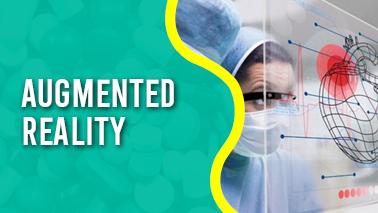
Tags
Personalized and Precision Medicine
Psychology and Psychiatrist Conferences
Geriatrics Conferences
Dentistry Conferences
Legitimate Scientific Conferences
Legitimate Scientific Conferences of Peers Alley Media
Peers Alley Media Scientists Opinion
Nursing Conferences
HIV/ AIDS Conferences
Family Medicine Conferences
Pathology Conferences
Diabetes Research Conferences
Primary Care Conferences
Chronic Disease Conferences
Genomics Conferences
Tags
Public Health Conferences
Personalized and Precision Medicine
Pharma Drugs and Research Conferences
Pharmaceutical Conferences
Infectious Diseases Conferences
Legitimate Scientific Conferences of Peers Alley Media
Pathology Conferences
Nursing Conferences
Primary Care Conferences
Pediatrics Conferences
Cardiology Conferences
Legitimate Scientific Conference Organizer
Clinical Medicine Conferences
Occupational Health and Safety Conferences
Preventive Medicine Conferences

Tags
Pediatrics Conferences
Pharmaceutical Conferences
Dentistry Conferences
Chronic Disease Conferences
Peers Alley Conferences Reviews
Pathology Conferences
Legitimate Scientific Conferences of Peers Alley Media
Nursing Conferences
Peers Alley Media Scientists Opinion
Oncology Conferences
Nano Medicine Conferences
Family Medicine Conferences
Occupational Health and Safety Conferences
Biotechnology Conferences
Peers Alley Media Scientists Opinion

Tags
Peers Alley Media Conferences Feedback
Legitimate Scientific Conference Organizer
Diabetes Research Conferences
Nursing Conferences
Public Health Conferences
Genomics Conferences
Dentistry Conferences
Virology Conferences
Oncology Conferences
Pediatrics Conferences
Pathology Conferences
Biotechnology Conferences
Digital Health Conferences
Nutrition and Heath Conferences
Geriatrics Conferences

Tags
Diabetes Research Conferences
Personalized and Precision Medicine
Internal Medicine Conferences
Psychology and Psychiatrist Conferences
Cardiology Conferences
Legitimate Scientific Conference Organizer
Family Medicine Conferences
Clinical Medicine Conferences
Nursing Conferences
HIV/ AIDS Conferences
Peers Alley Media Scholars Opinion
Digital Health Conferences
Preventive Medicine Conferences
Pathology Conferences
Peers Alley Media Conferences Feedback

Tags
Psychology and Psychiatrist Conferences
Primary Care Conferences
Pathology Conferences
Infectious Diseases Conferences
Biotechnology Conferences
Personalized and Precision Medicine
Occupational Health and Safety Conferences
Family Medicine Conferences
Nursing Conferences
Pediatrics Conferences
Legitimate Scientific Conferences of Peers Alley Media
Healthcare Conferences
Preventive Medicine Conferences
Virology Conferences
Oncology Conferences

Tags
Peers Alley Media Conferences Feedback
Pediatrics Conferences
Virology Conferences
Biotechnology Conferences
Pharmaceutical Conferences
Nutrition and Heath Conferences
Nursing Conferences
Legitimate Scientific Conferences
Clinical Medicine Conferences
Healthcare Conferences
Legitimate Scientific Conferences of Peers Alley Media
Endocrinology Conferences
Family Medicine Conferences
Oncology Conferences
Peers Alley Media Scholars Opinion

Tags
Biotechnology Conferences
Clinical Medicine Conferences
Infectious Diseases Conferences
Peers Alley Media Scholars Opinion
Pediatrics Conferences
Oncology Conferences
Healthcare Conferences
Peers Alley Media Scientists Opinion
Psychology and Psychiatrist Conferences
Genomics Conferences
Legitimate Scientific Conference Organizer
Geriatrics Conferences
Pharmaceutical Conferences
Public Health Conferences
Peers Alley Media Scientists Opinion
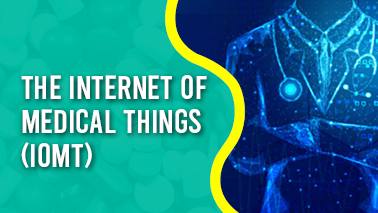
Tags
Nano Medicine Conferences
Legitimate Scientific Conferences
Nursing Conferences
Digital Health Conferences
Oncology Conferences
HIV/ AIDS Conferences
Clinical Medicine Conferences
Primary Care Conferences
Occupational Health and Safety Conferences
Legitimate Scientific Conference Organizer
Pharmaceutical Conferences
Virology Conferences
Peers Alley Media Scientists Opinion
Healthcare Conferences
Public Health Conferences

Tags
Legitimate Scientific Conferences
Chronic Disease Conferences
Peers Alley Conferences Reviews
Peers Alley Media Scholars Opinion
Occupational Health and Safety Conferences
Clinical Medicine Conferences
Legitimate Scientific Conferences of Peers Alley Media
Nano Medicine Conferences
Pharma Drugs and Research Conferences
Internal Medicine Conferences
Biotechnology Conferences
Nutrition and Heath Conferences
Family Medicine Conferences
Endocrinology Conferences
Pediatrics Conferences

Tags
Diabetes Research Conferences
Dentistry Conferences
Nano Medicine Conferences
Public Health Conferences
Personalized and Precision Medicine
Pathology Conferences
Internal Medicine Conferences
Pharma Drugs and Research Conferences
Genomics Conferences
Preventive Medicine Conferences
Digital Health Conferences
Primary Care Conferences
HIV/ AIDS Conferences
Endocrinology Conferences
Peers Alley Conferences Reviews
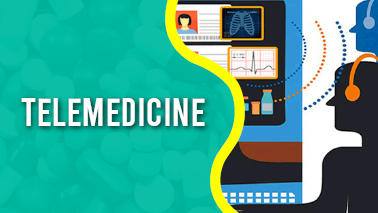
Tags
Nursing Conferences
Cardiology Conferences
Family Medicine Conferences
Primary Care Conferences
Pediatrics Conferences
Chronic Disease Conferences
Clinical Medicine Conferences
Occupational Health and Safety Conferences
Public Health Conferences
Personalized and Precision Medicine
HIV/ AIDS Conferences
Peers Alley Media Scientists Opinion
Pharma Drugs and Research Conferences
Legitimate Scientific Conferences
Nano Medicine Conferences

Tags
Chronic Disease Conferences
Legitimate Scientific Conference Organizer
Genomics Conferences
Virology Conferences
Pediatrics Conferences
Geriatrics Conferences
Primary Care Conferences
HIV/ AIDS Conferences
Nano Medicine Conferences
Nursing Conferences
Diabetes Research Conferences
Pharma Drugs and Research Conferences
Peers Alley Media Scholars Opinion
Clinical Medicine Conferences
Peers Alley Media Scientists Opinion
Vision
We work hard to improve the lives of our patients and their families by collaborating with the healthcare community. We offer clinical experience to both allied health professionals and patients.
We focus on the right to comprehensive, high-quality primary care for individuals and populations.
• To provide the most safest, ethical, and effective medical care possible.
• Practice the safest, most ethical and effective medical care possible.
• Breakthrough research can lead to the discovery of new treatments and therapies.
• Promoting healthy and reducing health disparities.
• Educate and inspire faculty, healthcare developers, policy makers and leaders of the next generation.
• Build a philanthropic culture for patient care and research.
Mission
Our objective is to disseminate healthcare information and innovations that will guide in a new era of medicine.
Healthcare Market Forecast
Healthcare is one of those industries that has never seen ups and downs, particularly since technology has taken over its progress.
Even throughout the pandemic, technology was important in advancing healthcare to a higher level.
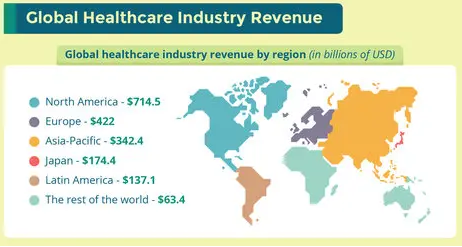
In 2019, the global home healthcare market was valued at USD 281.8 billion, with a compound annual growth rate (CAGR) of 7.9% predicted from 2020 to 2027. Market growth is expected to be increased by global population ageing and rising patient preference for value-based healthcare. In 2019, the World Health Organization (WHO) estimated that 703 million people aged 65 and up lived in the world. By 2050, the number of elderly people is expected to increase to 1.5 billion. The ageing population necessitates more patient-centric healthcare services, which in turn raises demand for healthcare personnel and agencies, drive market growth.
Medicare is the largest single payer of home healthcare services in the United States. Medicare accounts for more than 40% of all home health care expenses.
Healthcare Market Overview in USA
The home healthcare market is divided into two components: equipment and services, wherein the services segment dominated the market with a share of 80% in 2019. The demand for home healthcare agencies is increasing as the world's population ages, resulting in better patient outcomes. Furthermore, the rising frequency of chronic diseases among the elderly is a prominent factor contributing to market growth.
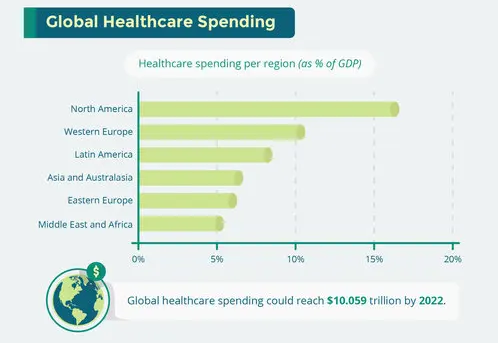
In 2019, therapeutic devices dominated the equipment market. The growing number of patients with chronic or severe respiratory infections, urinary infections, or end-stage renal disease (ESRD) necessitates the use of innovative devices for treatment. Another important element driving the therapeutic equipment market is lower service rates for in-home healthcare when compared to hospitals or nursing homes. End-stage renal diseases (ESRD) affects roughly 750,000 persons in the United States each year, and 2 million patients worldwide, according to the University of California, San Francisco
The diagnostics equipment market is expected to develop at a healthy rate over the projected period, owing to the rising prevalence of diabetes and cardiovascular illnesses, both of which necessitate constant monitoring. Furthermore, increasing patient awareness of the screening process and technological advancements, such as the integration of microfluidics, sensors, the Internet of Things (IoT), smartphones, and wearables, provide point-of-care testing to patients and represent a significant opportunity for providing sensitive, low-cost, rapid, and connected diagnostics.
In 2019, North America dominated the home healthcare industry with a 42% share. In 2019, the United States had the greatest market share in North America, due to changing trends towards in-home healthcare from nursing homes, technology advancements, and the presence of modern medical infrastructure. In addition, the region's market is being driven by high patient awareness levels, rising healthcare expenses, and the deployment of a streamlined regulatory framework. Profits in the U.S. healthcare industry are expected to grow at a 5% annual rate through 2024, with medtech and healthcare IT experiencing the fastest growth. Profits in healthcare information technology are expected to rise from 14 billion US dollars in 2019 to 28 billion US dollars in 2024.
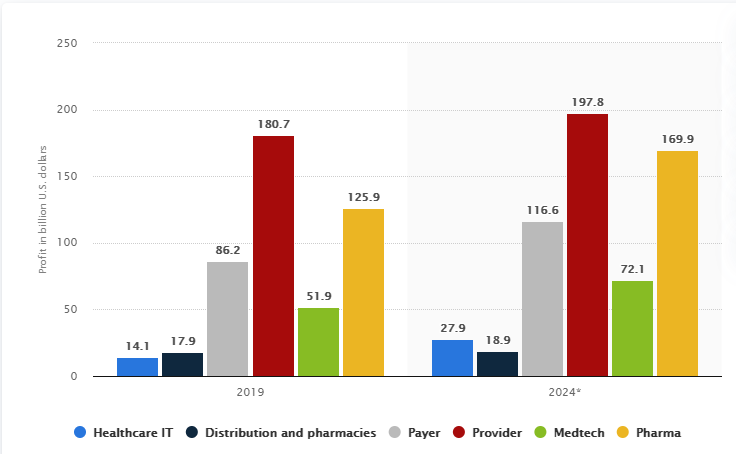
Healthcare Market Overview in Japan
Japan is the world's second-largest market for medical devices and healthcare. Japan is open to innovative and high-quality products and technologies, with nearly 45% of medical devices imported.
By nearly 180,000 medical facilities, including hospitals and clinics, Japan has the world's second largest healthcare market. In fiscal FY 2010, national medical expenditure was 37.4 trillion (approx £249 billion @150 = £1), a 3.9 percent increase over the previous year. This was a record-high in terms of both level and rate of growth, driven by the implementation of cutting-edge medical technologies as well as one of the world's fastest ageing populations. As a result of the ageing population, demand for assistive and care products has increased. However, the market is already crowded with a wide range of products, making it extremely difficult for new entrants lacking unique selling points.
The Japanese medical device market is also the world's second largest, valued at 2.4 trillion yen (approx. £16 billion) in 2011, with foreign manufacturers accounting for 44.4 percent of the products. Japan has long been known as a high-tech nation, but the market for medical devices is still heavily reliant on imports.
Healthcare Market Overview in Europe
Despite rising global trade tensions and a sluggish global economic outlook for 2020, the global healthcare market is expected to surpass $2 trillion in 2020. BREXIT is expected to have a significant impact on the United Kingdom, Europe's largest digital healthcare market.
In the forecast period of 2020 to 2027, the healthcare IT market is expected to grow. According to Data Bridge Market Research, the market will be worth USD 150.97 billion by 2027, growing at a CAGR of 15.62 percent during the forecast period.
The European healthcare market is expected to grow from approximately $2080 billion in 2016 to approximately $2125 billion in 2020. The European healthcare market is expected to exceed US$ 224 billion by 2022.
The European home healthcare market was worth USD 70.28 billion in 2019 and is expected to grow at an 8.37 percent CAGR to reach USD 105.04 billion by 2024.
In 2019, Germany had the highest market share in Europe, followed by France. This is mostly due to rising in-home healthcare spending in the country and rising demand for the skilled nursing workers to provide in-home care.
Healthcare Market Overview in Australia
The health care and social assistance industry is Australia's largest employer. This industry employed over 1.7 million people in 2020, with a projected increase to more than 1.9 million by 2024.
Occupations related to the HLT – Health Training Package account for roughly one-third of the workforce in Health Care and Social Assistance. The occupations with the highest proportion of the workforce are Aged and Disabled Carers and Nursing Support and Personal Care Workers. Both are expected to grow significantly until 2024, with Aged and Disabled Carers growing by more than 25%. Other occupations in this sector are expected to grow to varying degrees as well. Welfare Support Workers, for example, are expected to grow by nearly 23%, Health and Welfare Services Managers by about 19%, and Complementary Health Therapists by about 15%.
Medical device industry overview: The medical device sector in Australia is mature, with a well-developed regulatory system. However, in the next years, it will be one of the slowest-growing economies in the South Pacific area. In 2016, the market was worth $4 billion, down from $5 billion in 2014. Due to Australia's sinking currency, market recovery will be delayed in 2019. Despite its low growth, Australia's ageing population, Federal Budget measures, and openness to adopt new technology should help to stabilise the market.
Australian market opportunities: Australia's healthcare business is sophisticated and open to innovative products. A wide range of medical gadgets, particularly those designed to treat and manage age-related disorders, are in high demand. Because the Australian market is pushed to cut prices, imported devices are frequently inventive and cost-effective. In addition, there is a growing demand for gadgets that help people with disabilities and chronic pain, as well as those that help them recover faster. The Australian market is highly accessible from a regulatory aspect for items that already have CE Marking.
Healthcare Market Overview in Middle East
Healthcare prospects are expanding across the Middle East. According to a recent analysis by the US-UAE Business Council, healthcare spending in the UAE is forecast to rise from $17 billion in 2017 to $21.3 billion by 2021, with a CAGR of 8.5 percent predicted between 2018 and 2023 in the UAE Healthcare Sector Outlook 2023 report.
Aging populations, longer life expectancies, and sedentary lifestyles, all of which contribute to an increase in obesity, cancer, and diabetes, are driving demand growth. New modes of care and out-of-hospital services are emerging as a result of an emphasis on prevention and well-being rather than simply treating patients. Saudi Arabia, for example, is developing a new healthcare system that includes primary, community, and secondary care.
Simultaneously, labour challenges, such as a lack of competent clinical staff and a strong reliance on expatriates, are pushing demand for technology such as digital health, artificial intelligence, and robots to fill the gap. By 2025, the region's medical technology market is estimated to be worth $31.6 billion.
The size of the Middle East and Africa Home Healthcare Market was worth USD 21.62 billion in 2020 and estimated to be growing at a CAGR of 9.30%, to reach USD 33.32 billion by 2025 during the forecast period.
These countries are expected to have a market size of USD 102 billion in 2024 with a CAGR value of 9.2% during the forecast period. Healthcare is the fastest-growing sector in the UAE, accounting for 79% of the market.
Healthcare Market Overview in APAC
The size of the home Healthcare Market in the Asia Pacific was worth USD 43.25 billion in 2020 and estimated to be growing at a CAGR of 12.56% to each USD 78.14 billion by 2025.
|
Home Healthcare Market Report Scope |
|
|
Report Attribute |
Details |
|
Market size value in 2020 |
USD 303.6 billion in 2020 |
|
Revenue forecast in 2027 |
USD 515.6 billion |
|
Growth Rate |
CAGR of 7.9% from 2020 to 2027 |
Contact us now and we will make your event unique & unforgettable

The use of the empathic mode for engaging and communicating with patients has become widely accepted by many psychoanalytic psychotherapists since Heinz Kohut’s early formulations (Kohut, 1971; Atwood & Stolorow, 2014.) However, diagnostic understanding based on ongoing empathic immersion with our patients is often complicated because it is continually being modified as we know them more deeply and as transference and countertransference factors influence our perceptions. To illustrate the complexity of diagnosis when it is grounded in ongoing empathic engagement with our patients, I describe in detail my treatment of an elderly woman who initially presented with severe and acute symptoms of psychological, cognitive, and physical impairments. As the treatment has progressed, my diagnostic understanding has been continually modified to include a combination of psychodynamic and organic factors including PTSD, intense unresolved grief, and extreme feelings of guilt and need for subsequent punishment. Adding further to this conundrum, this patent’s treatment has been challenged by the complexity of working remotely during the Covid pandemic, which will become increasingly problematic as our patient populations continue to age.

The unexpected experience of COVID-19 allows us to investigate people's memories of the news of the first case in own country. When a shocking, significant and surprising public event occurs, people retain in their memory not only central details related to the original event, but also peripheral details related to the context of reception of the news for a long time. This particular type of memory was developed by Brown and Kulik in 1977 and called Flashbulb Memory (FBM). As part of an international project involving several countries around the world, the research focuses on FBMs messages created during the time of the pandemic by asking people to report details about the context of reception of the messages. The aim of the study is to test the impact of COVID -19 related variables on FBM formation, such as personal subjective variables (health concerns; perceived severity by country; unexpectedness of importance, percentage of time spent thinking/discussing/searching news about the pandemic) and objective country-level variables (severity of morbidity, mortality and government restrictions). We then compare responses to understand whether FBM formation varies across countries. The data were collected with an international survey conducted by researchers from the participating countries. To explore possible relationships between variables, hierarchical multiple regression models were used to assess whether personal subjective variables namely health concerns, perceived severity, unexpectedness of the event COVID-19, importance of the event, percentage of time spent thinking/discussing/searching for news about the pandemic, and/or objective country-level variables such as severity of morbidity, mortality and government restrictions, were able to influence flashbulb recall. In addition, predictive machine learning techniques were used to examine key covariates (gender, age, geographic residence, impact of the pandemic, perceived and objective severity, and unexpectedness, importance and recurrence) that may explain different degrees of specificity of flashbulb memories
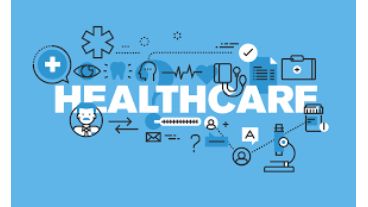
Disruptive behaviors (DBs) are a class of externalizing behaviors that include physical aggression, property destruction, temper outbursts, verbal aggression, and some forms of self-injurious behaviors. DBs are the most frequent reason for behavioral health referrals among individuals with neurodevelopmental disorders (NDDs), including children and adolescents. Unfortunately, the psychopharmacologic management of DBs in individuals with NDDs lacks a strong evidence base. One factor contributing to this shortcoming is that DBs are complex and poorly understood manifestations of numerous etiological pathways interacting with diverse environmental influences. Further, our current psychopharmacologic approaches frequently disregard the diversity of this patient cohort. Lastly, treatment studies do not address the heterogeneity of DBs in individuals with NDDs. This world of dueling heterogeneity partially explains why the evidence to support any given treatment is sparse. So how does the medical community compensate for the myriad complications in treatment and subsequently develop effective protocols for managing DBs? The answers lie with the best teachers in medicine: our patients. Our objective with this talk is to illustrate best practices for the management of DBs in individuals with NDDs using a case vignette. Audience members will leave with key principles of best prescribing practices and future directions for ongoing research in psychopharmacology for DBs.

